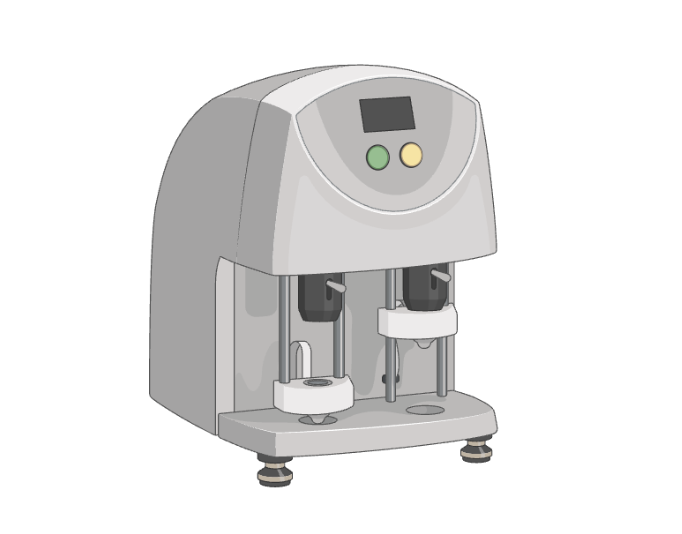
Introduction:
Thromboelastography (TEG) is a remarkable diagnostic tool that provides valuable insights into the complex process of blood clotting. By assessing the mechanical properties of a clot in real-time, TEG offers a dynamic perspective on hemostasis and plays a crucial role in diagnosing and managing various medical conditions. When compared to traditional coagulation tests, such as the prothrombin time (PT) and activated partial thromboplastin time (aPTT), TEG offers a more comprehensive and dynamic assessment of blood clotting. While PT and aPTT provide information about the initiation and propagation of clotting through the extrinsic and intrinsic pathways, respectively, they have limitations in capturing the complete clotting process. In contrast, TEG provides a more functional evaluation by assessing the clot's formation, strength, stability, and fibrinolysis in real-time. This dynamic view enables clinicians to identify hidden coagulation abnormalities, tailor transfusion strategies, and make informed decisions regarding patient management. Furthermore, TEG's ability to provide a personalized assessment of clotting dynamics sets it apart from the static measurements obtained through traditional coagulation tests, allowing for more precise interventions and improved patient outcomes.
-A little bit of history of TEG development in China:
In 1948, Professor Harter from Germany first described thromboelastography (TEG) testing.
In the 1960s, TEG technology was introduced to the United States.
In the 1980s, Western countries began widely using TEG to guide intraoperative blood transfusion, leading to significant achievements. The TEG technology was further developed and commercialized by Haemoscope Corporation (now part of Haemonetics Corporation). They introduced the first commercially available TEG analyzer, which became widely adopted in clinical practice and research.
In 1995, TEG was formally applied in the field of cardiac surgery.
Starting from the year 2000, top-tier hospitals in China began adopting TEG testing, initially in departments such as anesthesiology, ICU, extracorporeal circulation, and organ transplantation.
In 2004, the TEG family added methods for assessing the efficacy of antiplatelet drugs.
In 2006, TEG testing was incorporated as a supplementary test to the routine coagulation panel in clinical laboratories.
By June 2007, TEG analyzers were included in the "Clinical Laboratory Test Catalog of Medical Institutions" and the "National Medical Service Price Item Specification (2001 edition) catalog." In 2009, large hospitals such as Beijing 301 Hospital and Peking Union Medical College Hospital became early adopters of the technology, leading to a rapid expansion of its market network.
Nowadays, you will see more and more Automation TEG platforms in the market.

Principles of TEG:
At its core, TEG measures the viscoelastic properties of blood clots, offering a more comprehensive assessment compared to traditional coagulation tests. It evaluates the clot formation and stability, shedding light on the clotting process's efficiency and functionality. A TEG analysis involves three main components: the blood sample, the TEG instrument, and the resulting TEG graph. The graph provides valuable parameters, including R-time (reaction time), K-time (clot formation time), angle (clot strength development), maximum amplitude (MA), and clot lysis, offering a detailed profile of clotting characteristics.

Clinical Applications:
TEG finds wide-ranging applications in clinical practice. In perioperative monitoring, TEG helps guide transfusion decisions, ensuring optimal blood management. In trauma cases, TEG aids in identifying coagulopathy and tailoring appropriate treatment strategies. Moreover, TEG provides insights into liver disease assessment and assists in monitoring anticoagulant therapy efficacy.
Advantages and Limitations:
TEG offers several advantages over traditional coagulation tests. By capturing the complete clotting process, TEG provides a more functional assessment, allowing clinicians to identify hidden abnormalities. TEG's dynamic nature enables personalized treatment decisions, ensuring tailored interventions. However, it's important to acknowledge the limitations of TEG, including the need for specialized training and the variability between TEG platforms. Interpretation challenges also exist, necessitating expert analysis.
Future Developments:
The Future is Now, exciting advancements are underway in the field of TEG. Automation is being explored to simplify and streamline the process, reducing human errors and increasing efficiency. Standardized protocols are being developed to ensure consistency and comparability across different TEG systems. Integration with other diagnostic tools may further enhance the diagnostic power of TEG, opening doors to new possibilities in personalized medicine.
Here are a quick list of the companies that they are offering their TEG platforms in China:

Conclusion:
TEG stands as a powerful diagnostic tool, offering a dynamic view of blood clotting. Its ability to evaluate the mechanical properties of clots in real-time provides valuable insights into hemostasis and aids in clinical decision-making. As research and technology advance, TEG holds the potential to revolutionize patient care, improving outcomes and guiding personalized treatment approaches. To learn more about TEG and its implications for your health, consult healthcare professionals who can provide further guidance and expertise.
If you have any questions about TEG technology, whether they are related to its technical aspects or the availability of resources in China, please feel free to leave your comments below. Our team will be happy to assist you and provide any information you may need.


Add comment
Comments